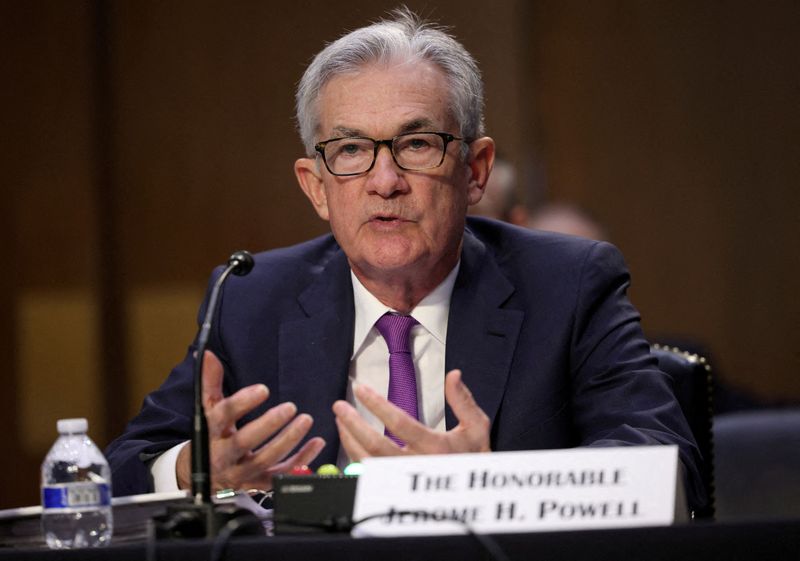By Jonnelle Marte, Howard Schneider and Ann Saphir
(Reuters) - The ink had barely dried on the Federal Reserve's November policy decision to begin reducing bond purchases when Chair Jerome Powell became persuaded they'd need to push even harder against inflation.
It was the culmination of a volatile few weeks in which inflation went from an academic threat - Powell offered a lengthy discourse on it at the Fed's Jackson Hole symposium - to a clear danger to the economy and sent the Fed chair charting out the central bank's next move.
Leading up to the November meeting, a few policymakers - St. Louis Fed President James Bullard among them - had been pressing for a faster "taper" to make room for an earlier rate hike if needed. But their voices hadn't carried the day, and Fed policymakers had for weeks been prepping markets and the public to expect the exercise of bringing its bond purchases from $120 billion a month to zero would extend into mid-2022.
(Graphic: Wage and benefit costs Wage and benefit costs, https://graphics.reuters.com/USA-FED/INFLATION/zdvxorebnpx/chart.png)
Just days before the Fed's November meeting, however, when the plan was to be announced, Powell got his first inkling that the pace might be too slow: The Labor Department reported labor costs in the third quarter had shot up by the most since 2004.
"I thought for a second there whether we should increase our taper," Powell said at a press conference on Wednesday, but decided to go ahead with the pace that had been "socialized."
The Fed announced at the end of the meeting on Nov. 3 that it would begin reducing its purchases of Treasury securities by $10 billion monthly and of mortgage-backed securities by $5 billion starting in mid-November, a tapering rate that if sustained would have wrapped up the program by June.
(Graphic: Labor market progress, https://graphics.reuters.com/USA-FED/POWELL-PIVOT/byvrjqdjdve/chart.png)
Another jolt came just two days after the meeting when employment gains for October came in much higher than expected, and the Labor Department said nearly a quarter million more jobs had been created in the prior two months than initially thought.
It was the next week's inflation data, though, that carried Powell fully over the line: The Consumer Price Index showed inflation surging at a rate not seen in three decades and growing increasingly broadbased, data that made it untenable to continue characterizing it as "transitory."
"I honestly at that point really decided that I thought we needed to look at speeding up the taper and we went to work on that," he said.
(Graphic: The COVID inflation surge The COVID inflation surge, https://graphics.reuters.com/USA-FED/INFLATION/akvezawxopr/chart.png)
From there, Powell moved to build consensus among policymakers that they should double the taper pace to conclude asset purchases by March - a decision approved unanimously at this week's meeting. That gives officials more leeway to raise interest rates next year if needed to tackle the higher inflation, a step they would not want to take until after they've stopped purchasing bonds.
"It was essentially higher inflation and, and faster - turns out much faster - progress in the labor market," Powell said.

Taming higher inflation will also help to remove one of the biggest "threats" to the Fed's goal of achieving maximum employment because it could allow for a potentially longer expansion, Powell said.
"That's what it would really take to get back to the kind of labor market that we'd like to see," Powell said. "And to have that happen, we need to make sure that we maintain price stability."